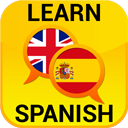How to Say ‘Drill’ in Spanish
The Importance of Learning Spanish Vocabulary
Learning Spanish vocabulary is essential for effective communication in various contexts, whether for travel, work, or personal enrichment. One commonly used word is “drill,” which can refer to both a tool and a practice exercise. Understanding how to say “drill” in Spanish can enhance your conversational skills and comprehension.
How Do You Say ‘Drill’ in Spanish?
The Spanish translation of “drill” is “taladro” when referring to the tool used for making holes. In the context of practice or training, it can be referred to as “ejercicio” or “práctica.”
Pronunciation
To pronounce “taladro,” say: tah-lah-droh. For “ejercicio,” it is pronounced as: eh-hehr-thee-see-oh (in Spain) or eh-hehr-see-oh (in Latin America).
Contexts of Usage
Using ‘Taladro’
Example: ¿Dónde está el taladro? (Where is the drill?)
Using ‘Ejercicio’
Example: Hicimos un ejercicio de práctica. (We did a drill exercise.)
Grammar Rules and Expressions
When using “taladro,” it is a masculine noun, so you would say el taladro (the drill). For “ejercicio,” it is also masculine, so you would say el ejercicio (the drill exercise).
Practical Examples
1. Voy a usar el taladro para colgar el cuadro. (I am going to use the drill to hang the picture.)
2. El entrenador nos dio un ejercicio para mejorar nuestra técnica. (The coach gave us a drill to improve our technique.)
Tips for Practicing and Remembering
To effectively remember how to say “drill” in Spanish, try the following tips:
- Use flashcards with the word “taladro” and “ejercicio” on one side and their meanings on the other.
- Incorporate these words into your daily conversations.
- Practice pronunciation with native speakers or language apps.
- Engage in activities that require the use of these terms, such as DIY projects or sports drills.
